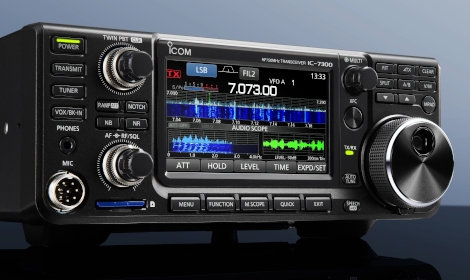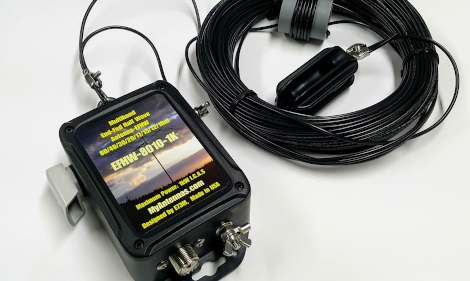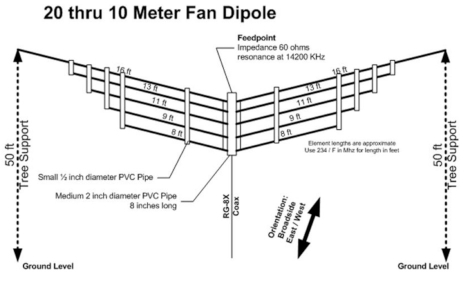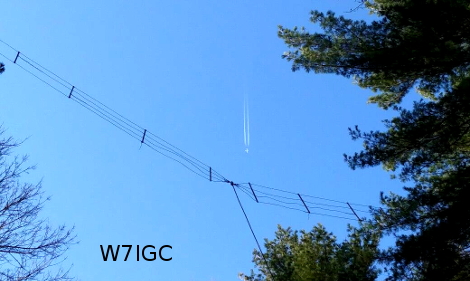|
|
|
New Ham FAQs!
One more Q!
There's tons to learn in Amateur Radio! Even those of us doing this for decades have many questions and lots to learn. The information on this webpage represents the most commonly asked questions by new folks, covering the basics of getting on the air and discovering the joys of this amazing hobby of Amateur Radio.
Newly Licensed!
I just got my ticket! What should I do to get started?
1. Set up your station! We have lots of suggestions on rigs and neighborhood friendly antennas right here on this page just below!
2. Register for LoTW. LoTW registration is free. LoTW is a great way to get electronic QSL confirmations that are recognized by ARRL, as you start collecting states and countries. http://www.arrl.org/quick-start
3. Register in QRZ, add a short bio and be sure to enter your LAT & LONG, so we can include you next time we run our NEMARC map: https://www.qrz.com/
4. Join our Club on ClubLog and then sync your ClubLog account with LoTW.
5. Familiarize yourself with the DX Code of Conduct. http://dx-code.com/
6. Consider becoming a Volunteer Examiner (VE). Our NEMARC VE team always needs more help. Please contact our VE coordinator if you would like to lean more.
7. Learn how our Contest Society fits under the NEMARC umbrella. Contests are a GREAT way to collect a lot of entities, see how well your station is working and have a huge amount of fun with us on contest weekends. Even if you only make a few QSOs, every one helps our club score! Lots more details are here!
8. Get on the air! If you are a rag chewer (someone with the gift of gab), call CQ or answer one. If quicker contacts are your style, look for DX stations making short Qs, check our contest calendar for upcoming contests and look for state QSO parties / special events to work. If you are unable to set up a station at your home, consider a mobile set up and becoming active with Parks on the Air!
9. Most of all, jump in and have fun! Like everything in life, the more you put into it, the more you will get out of it. Amateur Radio offers tremendous fun and excitement to last a lifetime! We think you will find our NEMARC club to be icing on the cake, so please hang with us often in our Virtual Clubhouse!
Antennas
What should I think about in terms of antennas?
This hobby is all about your antennas. Trying to get a sense of Amateur Radio without a decent antenna is like trying to read with someone else's glasses.
The better your antenna(s), the more contacts you will make, the more easily you will get in and out of pile ups, the more DX you will work, the faster your run rates will be and the more fun you will have. That's why many of us have beams for the high bands, dipoles cut for 40 and 80 and we are always striving to improve them.
If you are just starting out in the hobby, take a look at the EFHW 80-10. It is a single, affordable, neighborhood friendly wire antenna that does not require a tuner and works well on all bands. The EFHW is superior to other multi band, single wire antennas, such as the G5RV and Carolina Windom. Several NEMARCS members have used the EFHW 80-10 with good success.
For a real world comparison, during CQ WW SSB 2016, with sunspots around, the leading station using a nice beam (W3JX) made 1,117 QSOs for 1,346,208 points, while the station running an EFHW 80-10 (KB3KNX) made 525 QSOs for 375,300 points, with similar power and effort.
Alternatively, an even cheaper, easy to implement solution that is also neighborhood friendly is to put up a simple dipole for 20 meters as a single band antenna, or better yet, a fan dipole for multiple bands, either of which will work well at a reasonable height.
After you discover you love this stuff, you will likely want even better antennas. Even a small, light weight hex beam (only 25 pounds, neighborhood friendly, can be mounted on your chimney or light poll and turned with an inexpensive TV rotor) will be a big improvement, but the EFHW 80-10 or fan dipole is adequate to get you started.
Please see our Resources page for all the parts you will need to build a fan dipole, which are really just wire, a center connector, insulators and spacers.
What about an inside the attic antenna?
A vertical, omni antenna for 2 meters can work inside an attic if you don't have metal siding, but for HF, you probably will not get anything close to satisfactory performance. The attic attenuation is just too much.
How about a ground mounted vertical?
A simple dipole will outperform a ground mounted vertical in most cases, often significantly, but a ground mounted vertical is a reasonable choice if you don't have any trees or other structures from which to attach a wire. It can be disguised as a flagpole, etc., where HOA considerations apply. A vertical might not be the ideal antenna for anyone with trees to hang a dipole (it only takes one branch to hang an inverted V dipole), but with 60 ground radials, a vertical covers enough points on the globe with enough signal strength to keep Amateur Radio fun and interesting for a long time.
Several folks in our group have had good success using the DX Commander, which is designed along the lines of a vertical fan dipole. If a vertical makes the most sense for your set of circumstances, give it a good look.
Don't skimp on the ground radials! When ground mounted, 60 radials are a must, especially if this will be the only antenna in your arsenal! It only takes a few hours to install the radials, they don't all have to be 1/4 wavelength long, it's cheap and you'll enjoy the results. If you are installing in a grassy area, you don't even need to bury them. Just use a generous amount of staples, tack them down and the grass will suck them in so that you can mow right over them and never see them.
If I put up more than one antenna, do I have to install multiple coax runs into the house?
No, in fact, a much better approach is to use a remote antenna switch box like the RCS-10 8 Port Remote Switch Box. It makes on the fly antenna switching a snap and pays for itself in reduction of coax runs.
Is it possible to work DX and be competitive in HF contests with inexpensive wire antennas?
YES! You likely won't be first on our club leaderboard, but with a good wire antenna system and time in the chair, you can definitely place in the upper third of our group. Beams have great gain in one direction, but dipoles have pretty good gain in two, especially at reasonable heights. To hold your own in DX contests with wire antennas, I would suggest building 3 wire antennas: a fan dipole antenna for 80/40 and two separate fan dipoles for 20/15/10, oriented 90 degrees from each other.
Most of our contest DX contacts are with Europe, which is northeast from us, so orient one of your 20/15/10 fans broadside NE / SW and the other NW / SE. You can change direction as needed with the flip of your antenna switch!
Dipoles don't have the gain of beams, but they are good antennas that work well enough to keep you solidly in the game! We have lots more contesting tips here!
What should I expect on the bands in my first HF contest?
The main thing is to relax and have fun. Whether you make just a handful of contacts or wind up exceeding your expectations, participating in your first HF contest will give you a much better sense of how your station is performing on various bands, as well as the ebb and flow of propagation over the contest weekend. It will also give you a chance to learn how to set up rig interface, DX Spotting and join us on our club leaderboard. All these settings are easily transferrable to the rest of the contest programs, so it is well worth doing, even if you only plan to actually operate a short time. By the way, even if you only make one contact, EVERY QSO helps our club, so please jump in!
With a couple exceptions, most of the major HF contests begin 0:00 UTC Saturday morning (which is 7:00 PM Friday evening during Standard time and 8:00 PM during Daylight Savings Time for us here in Maryland). Typically, it can be a bit rough going out of the gate for DX contests, as all the European stations are working each other, but hang in there, after an hour or two, things begin to open up for us.
Every contest is different and propagation is not shy about throwing us unexpected and exciting curves, but there is a pretty typical pattern to expect. The bands 40, 80 and 160 are late afternoon / nighttime bands, that can be open world wide over night. Folks jumping in right at the start Friday evening will begin there. Very early in the mornings, before sunup, there are still a number of stations to work, many of which are in the Caribbean, Central and South America at that time. Don't be surprised to hear Hawaii, Australia and New Zealand early Saturday and Sunday mornings on 40 and 80 too!
20 will open to Europe shortly after sunup. Then, as we get into the better part of the cycle, 15 and 10 will open to EU as well. Sunup until shortly after lunch is often your best window for working a LOT of stations. There is typically a pretty deep lull early afternoon, when EU has faded out and you feel like you can't work much at all, before South America gets cranked up. Then, from mid afternoon on, propagation opens south and we are working the Caribbean / South American stations. EU will again join the party, sometimes as early as 3:00 PM on 40, depending on conditions. Shortly before the sun sets and the high bands (20/15/10) close, we occasionally get the thrill of working Japan! 80 and 160 will open back up as we get deeper into darkness.
Even with no sunspots, it pays to keep tabs on 15 and 10 meters. We will have occasional sporadic E propagation, which comes and goes, but gives us some nice contacts when it appears.
During the day, at the bottom of the cycle, most stations are crammed on 20 meters, so QRM is at its worst. With sunspots, 15 and 10 are fantastic all day and stations are more spread out with much less QRM! It is no coincidence that our highest QSO counts and best scores come at the peak of the cycle. Contesting is fun but challenging at the bottom of the cycle and an absolute blast at the peak!
You will likely find your antenna works better on some bands than others. Don't bang your head against the wall on bands where you just can't make a Q, but note which bands need improvement and work on that for the next contest. Where your antenna is working well, be sure to operate those bands when they are open.
For many of us, contesting has been something of an acquired taste. Those of us bringing a "full" effort will often operate 20 - 30 hours over the course of a 48 hour contest weekend (we do eat, sleep and sometimes shower), but few of us started out that way. It takes a few contests to really get all the nuances of what makes this so much fun. Commutating all over the world with nothing but your radio and wire is a thrill that keeps you coming back!
Don't ever feel like you have to spend all weekend. If you only operate for an hour or two and have had enough, take a break and come back when the mood returns. There is zero pressure and your only requirement is to have fun!
You will find lots more contest tips here and we are happy to help you every step of the way. Please ask on our Discord chat group any questions that you have. It is also fun for us to vicariously share in your thrills of experiencing a contest for the first time!
Do I need an antenna tuner?
Antenna tuners have their place and you may eventually have an application for one, but to start, focus on antennas that are already resonant on the bands you wish to operate. In most cases resonant antennas simply work better. Besides, most rigs today have their own, built in antenna tuners.
I live in a neighborhood with an oppressive HOA, on a postage stamp sized lot. Is there any hope for me?
Yes, there is hope! There's no doubt that a small lot size and very restrictive HOA adds to the challenge, but you have some options. You may have to adapt and focus on just two or three bands (if I only could operate three bands, they would be 40, 20 and 15), but there are stealthy, effective options that will work well and get your signal around the world.
In fact, the options we've already discussed are all quite stealthy. Black, insulated wire is very difficult to see, so it will certainly meet the spirit, if not the letter of most HOA restrictions.
In that circumstance, these would be my choices, in order of preference:
1. If a tree branch presents itself in a workable location, put up a dipole or fan dipole. You can hang the center apex of the dipole from the branch and pull off each end to other trees, your house or 4X4s planted as bird feeders. If you have two tree branches far enough apart to hang your dipole between them, super!
2. If no tree branch is handy, put your dipole up as a sloper. One end can be attached to the underside eve of your roof. You can always mount a bird feeder on a 4X4 at the opposite edge of your property for the other end. Just make sure you leave at least 6 feet of an 8 foot 4X4 above ground, so no one can walk into your wire. Using a 10 foot 4X4 with close to 8 feet above grade is even better. Slopers have a little gain towards the direction of the low end of the slope.
3. If an EFHW 80-10 won't fit, running from your roof eve to a 4X4 at the opposite end of your lot, get the shorter EFHW 40-10 model (it's only 63 feet) and put it up as described above. You could also try just mounting a random wire the same way and tuning it with your rig's tuner, though you will likely have better success and less RFI back in the shack using an EFHW, as it presents a good SWR out of the box.
4. If all you have is empty yard, with no trees and you don't want to use the sloper plan described above, put up a ground mounted vertical. A 20 meter vertical is only 16 feet high and can be made to look exactly like a flag pole. You can home brew it for a song with some PVC, painted to look like metal and wires fanned inside with the wire lengths tuned to multiple bands (20/15/10 for example). You can even fly a flag on it! If you aren't as concerned about HOA restrictions, there are plenty of commercial verticals to choose from as well. If you choose the vertical plan, don't skimp on the 60 ground radials!
5. Use one or more of the good, stealthy strategies suggested in The Villages Antenna Guide, Copyright © 2008 by Edwin Crowell, W5TWR and The Villages Amateur Radio Club. This is a nice document with lots of good pictures.
6. If you have no other choice, put up a fan dipole in your attic for 20/15/10 (and 40 if your house is at least 66 feet long). My personal experience with attic antennas has been disappointing. The same antenna moved outdoors works considerably better. That said, some folks do have some success with attic antennas, but its place at the bottom of this list is well deserved.
Remember! Townhomes and areas where there is a large, concentrated mass of housing, typically also means there’s likely a proportionate amount of RFI! This RFI is usually generated from things like grow lights and other power supplies for solid state devices. Whatever HF antenna system you intend to try, the further away from your home, the critical mass of dwellings and various sources potential of RFI, the better!
What is the best way to solder on a PL 259 connector?
This short video details an easy method to install PL 259 connectors. Note that with this method it is only necessary to solder the center conductor. There is no need to try and perform the more challenging task of soldering the shield. While a torch is used in this video, a soldering iron works fine too.
If you don't want to solder connectors at all, you can purchase premade assemblies as detailed on the coax section of our resources page. Just be sure to use good quality cable, such as LMR 400 or RG 213. Thinner cables such as RG 58 are too lossy.
What about RF exposure safety?
We are all required to make sure that we keep ourselves, our families and neighbors safe from RF exposure by performing an assessment of our station. In most cases, even with your antennas quite close, with 100 watts or less on most bands (or 50 watts or less on 10M, 6M and 2M), you are probably fine, but it is still important (and required by the FCC) to do the assessment and be mindful of RF exposure. The ARRL Safety Exposer Calculator is here. This spreadsheet will also quickly do the calculations for you. An explanation of the spreadsheet is here.
Rigs
What rig would you recommend for a new ham?
Given that many of us have different manufacturers we gravitate towards, it is surprising how much consensus there is when this question is asked. Almost all of us will tell you that the Icom 7300 is the best option for new hams on the market right now. For the features and price point, the Icom 7300 is your best value, best rig to introduce you to this amazing adventure and a rig that you will be able to stay with for a good while as you progress in the hobby. We have new guys, as well as seasoned operators in the club, very happy with their Icom 7300s. You will be very happy with that choice.
Should I consider a used rig?
Most of us would say no, get the Icom 7300. You are only going to save a few hundred dollars and you will wind up with a rig that doesn't have the latest features. You may miss the joy the performance of a modern rig brings, get frustrated and miss out on a great hobby, or realize you should have purchased a state of the art rig to begin with and wind up spending even more. Not to mention, when you buy a used rig, you may be buying someone else's problem.
How about a QRP rig?
Operating QRP is a great challenge, but it is not for the faint of heart, and definitely not the best path when you are first becoming immersed in the hobby. Guys will tell you life is too short for QRP and they are quite serious. It is very frustrating to routinely be unable to make contact with the stations that you would like to work and definitely not the intro to Amateur Radio most folks would like. That is especially true if you are going to have compromised antennas.
Start with a 100 watt, state of the art rig. If you want to try QRP, you can always turn the power down, but trust me, you will regret not having the option of turning the power back up when you need it!
My resources are limited. Should I buy a 2 Meter rig, or put those funds towards an HF rig?
We totally understand the desire to get on the air as soon as you can, especially if you are a newly licensed Technician. The temptation to buy a nice, 2 meter rig for under $200 is strong. What you will find though, at least in our area, is that while there is a little EmComm, simplex and some repeater activity, 2 meter action is sparse and sporadic at best. You likely will not remain engaged in the hobby on 2 meters alone.
HF is where the action is. We all love the many aspects of HF including chasing DX, playing with the digital modes and participating together in HF contests, to name a few. You will be able to engage with us on our e-mail group and Discord clubhouse anytime (and we are much more accessible that way than via 2 meters), so put your resources into your first HF rig, get your General class Amateur Radio license if you haven't already and get ready to join us in the awesome fun of HF!
Are rigs and this hobby expensive?
It seems that way when you are first starting out, because you need to get your station set up, but this is actually a very affordable hobby. Once the upfront costs are done, everything after that is discretionary. These rigs will perform well for decades, so there is little required in ongoing costs.
What's more, this hobby has become progressively cheaper. A middle of the road rig 30 years ago was about $1K and that isn't inflation adjusted. After adjusting for inflation, todays $1K rigs are MUCH cheaper and FAR superior.
Finally, think about what your costs would be golfing for 3 years, boating or even bowling. In Amateur Radio, once your introductory costs are behind you (about the cost of one, average PC), you can settle in to a hobby that you can enjoy passionately from the comfort of your home, near your family, for the rest of your life, with very little required ongoing costs. In short, think of all the money are you going to save pursuing this hobby, compared to most of the others!
|
|
|
Copyright 2003-2021




